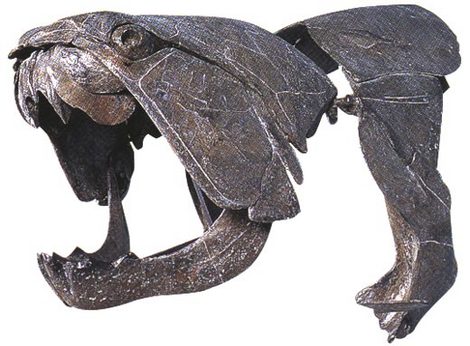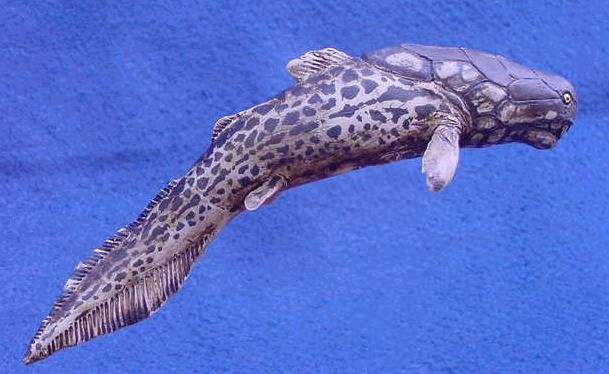 |
 |
 |
 |
 |
Produced
by the Population Genetics and Evolution class, Furman University |
||||
 |
 |
 |
 |
 |
Produced
by the Population Genetics and Evolution class, Furman University |
||||
 |
The
Devonian: Dunkleosteus |
 |
||
| Dunkleosteus
were massive predatory fish that ruled the Devonian oceans. They are classified
as Placoderms because of the hard plates that covered the surface of the
head. The rest of their body, however, lacked these plates to allow for
greater flexibility when swimming after prey (CMNH 2010). Discovered fossils
lead scientists to believe that Dunkleosteus could have reached
over twenty feet in length, meaning that it was probably the largest organism
in the ocean at the time (AMNH 2010). The most interesting feature that
they had was their massive, jawed mouth. Their jaws were not lined with
teeth; rather, their jaw had a set of paired razor sharp plates (White
2010). Dunkleosteus fossils demonstrate that, with the evolution
of jaws, vertebrates came to dominate the top-predator niche in the oceans.
Jaws allowed fish to close their mouth with greater force, allowing fish
to colonize the adaptive niche of 'predator'. Few have ever been as fearsome
as Dunkleosteus! Page by Pete Calomiris |
  |
| Picture 1: Dunkleosteus fossil.
From: Associated
Content Picture 2: Dunkleosteus painting, from: Prehistorics Illustrated |
|
|
American Museum of Natural History. 2010. Dunkleosteus. Accessed February 2010. The Cleveland Museum of Natural History. 2010. Dunkleosteus telleri. Accessed February 2010. White AT. 2003. Dunkleosteus telleri. Palaeos.org. Accessed February 2010. |